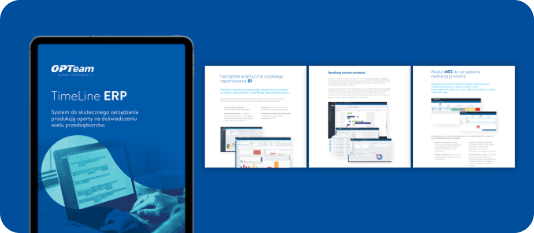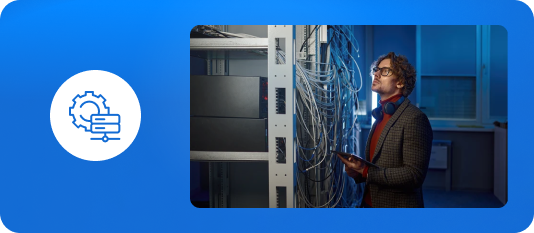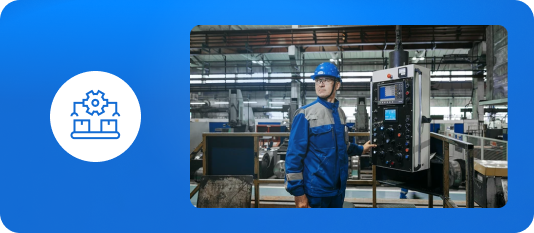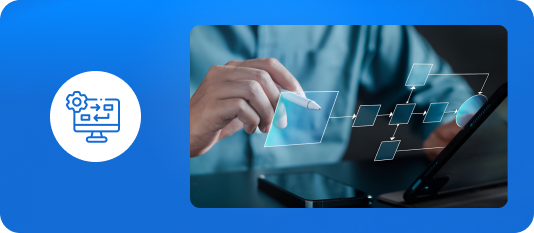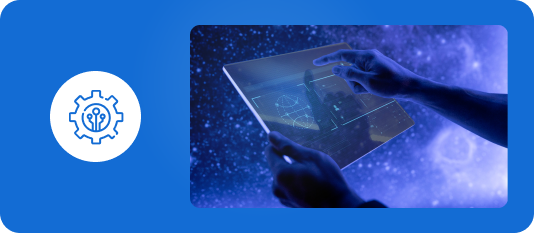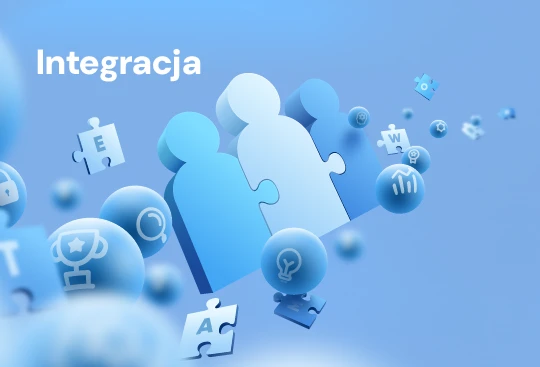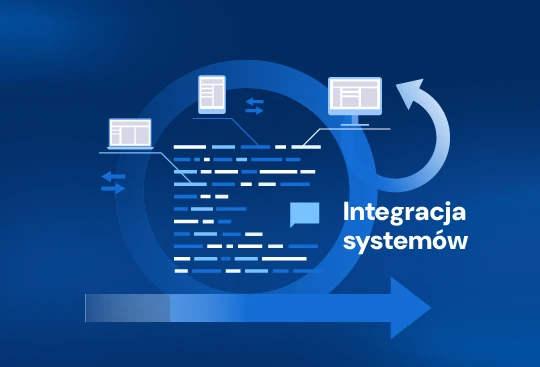How can proper integration improve collaboration between solutions and data exchange in manufacturing companies?
In a production environment, proper integration of systems and applications is particularly important for the efficiency of the manufacturing process and, consequently, for the competitiveness of the company. It ensures the smooth and rapid exchange of data, which is essential for better organization of tasks and operations, more efficient resource management, and supply chain optimization. Access to data increases operational efficiency.
An interesting and relevant example perfectly illustrating the importance of solution integration in a manufacturing environment is the combination of the TimeLine domain system with Comarch ERP XL and the OPTiPRO MES system, built on the low-code nAxiom platform with mobile panels for production workers. A manufacturing company specializing in project-based production had an ERP system for sales, accounting, and HR. However, it needed dedicated solutions that would facilitate order fulfillment and control of related tasks. Therefore, it decided to implement a production management system, as it perfectly meets the specific needs related to contract production management and a personalized approach to each project. Additionally, it implemented the OPTiPRO production execution system to monitor and manage production processes in real time. To ensure proper tool interoperability, an OptiSync data bus was used.
1. Adaptation to project-based production in Timeline ERP.
Timeline ERP is fully adapted to the needs of companies engaged in project-based production, meaning each production order can be treated as a separate project with its own schedule, cost estimate, documentation, and specific requirements. Integration with the OPTiPRO MES system, built on the nAxiom low-code platform, allows for real-time monitoring of the progress of individual production projects, enabling precise management of both production and costs assigned to specific orders.
2. Production execution panel on mobile devices.
Production workers use the OPTiPRO production management panel, available on 4-inch Android mobile data collectors, which allows them to continuously record the start and end of production cycles, raw material consumption, and the execution of production-related tasks such as technical breaks, maintenance, and cleaning. This mobility allows data to be immediately transferred to the MES system and from there to Timeline ERP, ensuring full synchronization with project-based production processes.
3. Real-time material consumption recording.
In the OPTiPRO MES system on nAxiom, employees can record material and raw material consumption at the production order level. For example, in the context of contract manufacturing, line workers can enter component consumption data directly on their mobile devices, which is then transferred to Timeline ERP. This allows for precise tracking of material costs for each order and assigning them to the appropriate projects, enabling precise billing to customers.
4. Recording production-related tasks.
The OPTiPRO MES system on nAxiom can also record production-related tasks, such as time spent on machine maintenance, downtime, and tool changes. This data is also transferred to Timeline ERP, allowing for ongoing production schedule updates, monitoring progress, and identifying potential project delays. This allows the company to make changes to production plans based on actual operating conditions, avoiding delivery delays and ensuring timely project completion.
5. Optimization of sales, accounting, and HR processes.
By integrating Timeline ERP with Comarch ERP XL, order, invoice, and HR data (e.g., employee work time on individual production orders) are automatically transferred between systems. This ensures ongoing inventory tracking, automatic generation of sales invoices and labor cost settlements, and enables effective payroll and work time management within the HR and payroll system.
6. Full control over production and projects.
Integrated ERP and discipline-specific systems give the company complete control over production, financial, and HR processes. Timeline ERP enables project production schedule management, real-time cost monitoring, and resource management, while the OPTiPRO system on nAxiom with a mobile dashboard allows direct control over the execution of each order. This integration allows the company to quickly respond to changing customer needs and optimize production processes, minimizing the risk of delays and project budget overruns.
Key benefits of using a data bus
Using a data bus significantly improves interoperability between systems, bringing numerous benefits. Primarily, it increases data consistency. Data transferred through the bus is processed according to established rules, ensuring a uniform structure across systems and minimizing the risk of errors resulting from formatting differences. Centralizing data exchange simplifies integration management. Instead of multiple integration points, all connections can pass through a single platform, simplifying monitoring and diagnostics. Another advantage is the ability to increase scalability. Modern data buses allow for the easy addition of new systems to the IT architecture without requiring major changes to the existing infrastructure. This allows companies to dynamically expand their operations and flexibly respond to market needs. Data buses also support real-time communication. Integrating ERP systems with other applications allows for the rapid exchange of information, which can accelerate decision-making and increase the efficiency of business processes.
Summary
To maximize production efficiency, ensuring seamless interoperability between these solutions was crucial. This was achieved through the OptiSync data bus, which allows for the integration of domain-specific solutions with the Comarch ERP XL enterprise management system. Its use allowed for the desired integration effect, allowing the company to achieve the desired interoperability between the implemented systems.
